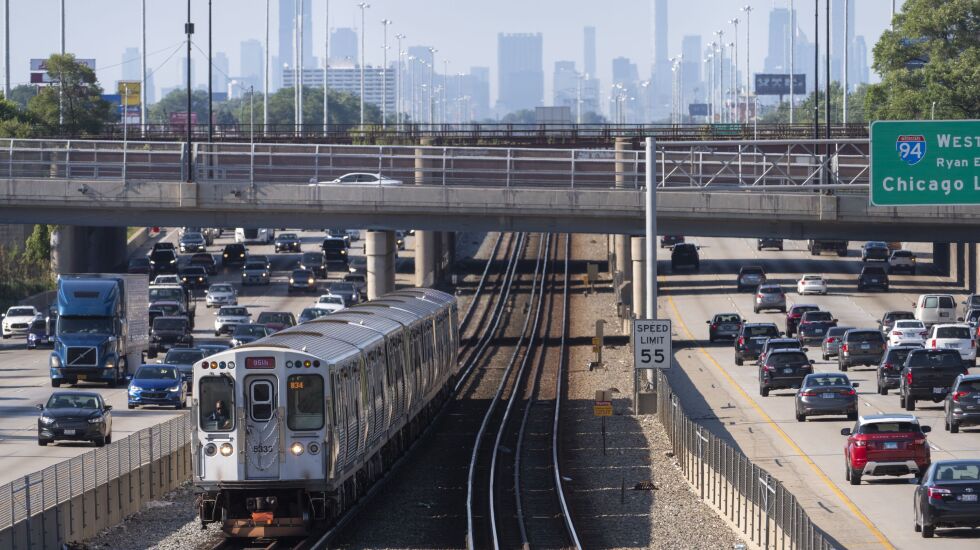
A series of major public transit investments on Chicago’s Far South Side and South Suburbs coming over the next several years could help move the area beyond its history as a transportation desert.
CTA is extending the Red Line to 130th Street. The Metra Electric Community Initiative aims to modernize 13 stations across the South Side and South Suburbs, making the stations accessible and transforming them into community anchors. Pace is introducing new Pulse rapid transit service on 95th and Halsted Street and working with Metra to build an upgraded transportation center in Harvey, to name just a few of the projects on the way.
For too long, people living in communities south of 95th Street have been disconnected from other neighborhoods with limited transit access and major infrastructure barriers like highways and industrial sites. A legacy of segregation has led to inadequate access to jobs, food, health care, education and other daily destinations.
The passage of the Rebuild Illinois capital plan in Springfield and the Bipartisan Infrastructure Law in Washington, D.C., in recent years has provided an opportunity to reverse this historic under-investment and make major leaps forward for residents.
The most talked-about project is CTA’s Red Line Extension. In September, CTA President Dorval Carter announced the extension from 95th to 130th Street is in line for nearly $2 billion in federal grant funding. This includes four new fully accessible stations with bus, bike, pedestrian and parking facilities. At least 100,000 people live within walking distance of the extension. The region is simultaneously investing state and federal dollars to support equitable transit-oriented development on 95th Street and all along the extension.
But the extension is just one of many high-impact transit investments on the way. Pace is advancing plans for the Pulse 95th Street Line, new rapid-transit service running east-west between the 95th Street Red Line Station and Moraine Valley Community College in Palos Hills. This includes enhanced, fully accessible bus stops and newly installed transit signal priority technology that gives buses priority at traffic signals, reducing delays and improving mobility for everyone traveling on the road.
Going electric, upgrading Metra
Pace and CTA are also transitioning their bus fleets to zero emissions, with a focus on deploying electric buses first in communities most harmed by air pollution. State and federal dollars are being used to upgrade garages and facilities, purchase e-buses and train operators and mechanics on the new technology. CTA’s bus garage on 103rd Street and Pace’s Southwest Garage in Bridgeview have already been identified as two of the first garages to be converted to electric.
Many of these buses will connect to 13 newly upgraded Metra rail stations and transportation centers across the Southland. Projects underway include the 79th Street/Chatham, 87th Street/Woodruff, 103rd Street/Rosemoor, Homewood and 147th/Sibley stations on the Metra Electric Line. Plans are also underway to upgrade the 95th Street/Chicago State Metra Electric station. The new stations will be fully accessible with enclosed entrances and lobbies, elevators, new platforms and new lighting.
In south suburban Harvey, Metra and Pace are partnering on the Harvey Transportation Center project to boost job access throughout south Cook County. The transit hub is home to 10 Pace bus routes and will feature a renovated Metra Electric Line Harvey Station, allowing safer and easier transfers. The entire facility will be accessible to people with disabilities and include a dedicated area for ADA paratransit vehicles, improving convenience and safety for thousands of daily riders.
These transformative investments could be just the start an equity-focused investment strategy, if state and federal legislators deliver high levels of capital funding for the long term. Just to bring the system’s infrastructure fully up to date, the region needs an investment of $2 to $3 billion per year, while a greater investment is needed to innovate, improve and expand service. The region is currently investing just over $1 billion per year.
Together, these investments have the potential to help catalyze economic growth and community development across the Far South Side and south suburbs. Thanks to major financial contributions from state and federal leaders, RTA, CTA, Metra and Pace are working together to focus transit investment in historically disinvested areas and advance equity and environmental justice across the region.
Kirk Dillard is chair of the Regional Transportation Authority (RTA) Board of Directors.
The Sun-Times welcomes letters to the editor and op-eds. See our guidelines.
The views and opinions expressed by contributors are their own and do not necessarily reflect those of the Chicago Sun-Times or any of its affiliates.







